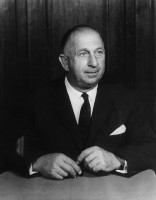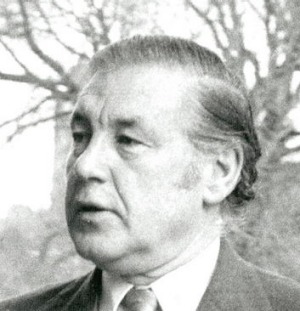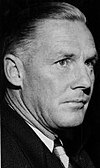
The Victorian Legislative Assembly is the lower house of the bicameral Parliament of Victoria in Australia; the upper house being the Victorian Legislative Council. Both houses sit at Parliament House in Spring Street, Melbourne.

The Victorian Legislative Council (VLC) is the upper house of the bicameral Parliament of Victoria, Australia, the lower house being the Legislative Assembly. Both houses sit at Parliament House in Spring Street, Melbourne. The Legislative Council serves as a house of review, in a similar fashion to its federal counterpart, the Australian Senate. Although, it is possible for legislation to be first introduced in the Council, most bills receive their first hearing in the Legislative Assembly.

The Parliament of Victoria is the bicameral legislature of the Australian state of Victoria that follows a Westminster-derived parliamentary system. It consists of the King, represented by the Governor of Victoria, the Legislative Assembly and the Legislative Council. It has a fused executive drawn from members of both chambers. The parliament meets at Parliament House in the state capital Melbourne. The current Parliament was elected on 24 November 2018, sworn in on 19 December 2018 and is the 59th parliament in Victoria.

The 2002 Victorian state election, held on Saturday, 30 November 2002, was for the 55th Parliament of Victoria. It was held to elect the 88 members of Victorian Legislative Assembly and 22 members of the 44-member Legislative Council.

The 1996 Victorian state election, held on Saturday, 30 March 1996, was for the 53rd Parliament of Victoria. It was held in the Australian state of Victoria to elect all 88 members of the state's Legislative Assembly and 22 members of the 44-member Legislative Council. The election took place four weeks after the 1996 federal election which swept the Labor Party from power nationally.

The 1992 Victorian state election, held on Saturday, 3 October 1992, was for the 52nd Parliament of Victoria. It was held in the Australian state of Victoria to elect all 88 members of the state's Legislative Assembly and 22 members of the 44-member Legislative Council.

The electoral district of Gippsland South is a Lower House electoral district of the Victorian Parliament. It is located within the Eastern Victoria Region of the Legislative Council.

Elections were held in the Australian state of Victoria on 15 July 1961 to elect the 66 members of the state's Legislative Assembly and 17 members of the 34-member Legislative Council. MLAs were elected for three year terms and MLCs were elected for six year terms. All were elected in single-member districts or provinces using preferential voting.

Elections were held in the Australian state of Victoria on 27 June 1964 to elect the 66 members of the state's Legislative Assembly and 17 members of the 34-member Legislative Council. The Liberal and Country Party (LCP) government of Premier Henry Bolte won a fourth term in office.

The 1982 Victorian state election, held on Saturday, 3 April 1982, was for the 49th Parliament of Victoria. It was held in the Australian state of Victoria to elect 81 members of the state's Legislative Assembly and 22 members of the 44-member Legislative Council.

The 1985 Victorian state election, held on Saturday, 2 March 1985, was for the 50th Parliament of Victoria. It was held in the Australian state of Victoria to elect all 88 members of the state's Legislative Assembly and 22 members of the 44-member Legislative Council. Since the previous election, the number of members of the Legislative Assembly was increased by 7 to 88.

The 1979 Victorian state election, held on Saturday, 5 May 1979, was for the 48th Parliament of Victoria. It was held in the Australian state of Victoria to elect 81 members of the state's Legislative Assembly and 22 members of the 44-member Legislative Council.

The 1976 Victorian state election, held on Saturday, 20 March 1976, was for the 47th Parliament of Victoria. It was held in the Australian state of Victoria to elect 81 members of the state's Legislative Assembly and 22 members of the 44-member Legislative Council. Since the previous election, there was an increase in the number of members of the Legislative Assembly by 8 and in the number of Council members by 8, though only 4 were elected at the 1976 election.

Elections were held in the Australian state of Victoria on Saturday 29 April 1967 to elect the 73 members of the state's Legislative Assembly and 18 members of the 36-member Legislative Council.

Elections were held in the Australian state of Victoria on Saturday 31 May 1958 to elect the 66 members of the state's Legislative Assembly. This was the last time Assembly elections were held separately from those for the Legislative Council.

The 1955 Victorian state election was held in the Australian state of Victoria on Saturday 28 May 1955 to elect 65 members of the state's Legislative Assembly.

The 1929 Victorian state election was held in the Australian state of Victoria on Saturday 30 November 1929 to elect the 65 members of the state's Legislative Assembly.
The 1927 Victorian state election was held in the Australian state of Victoria on Saturday, 9 April 1927, to elect the 65 members of the state's Legislative Assembly.

The 2018 Victorian state election was held on Saturday, 24 November 2018 to elect the 59th Parliament of Victoria. All 88 seats in the Legislative Assembly and all 40 seats in the Legislative Council were up for election. The first-term incumbent Labor government, led by Premier Daniel Andrews, won a second four-year term, defeating the Liberal/National Coalition opposition, led by Opposition Leader Matthew Guy. Minor party the Greens led by Samantha Ratnam also contested the election.
The Australian Labor Party , commonly known as Victorian Labor, is the semi-autonomous Victorian branch of the Australian Labor Party (ALP). The Victorian branch comprises two major wings: the parliamentary wing and the organisational wing. The parliamentary wing comprising all elected party members in the Legislative Assembly and Legislative Council, which when they meet collectively constitute the party caucus. The parliamentary leader is elected from and by the caucus, and party factions have a strong influence in the election of the leader. The leader's position is dependent on the continuing support of the caucus and the leader may be deposed by failing to win a vote of confidence of parliamentary members. By convention, the premier sits in the Legislative Assembly, and is the leader of the party controlling a majority in that house. The party leader also typically is a member of the Assembly, though this is not a strict party constitutional requirement.










